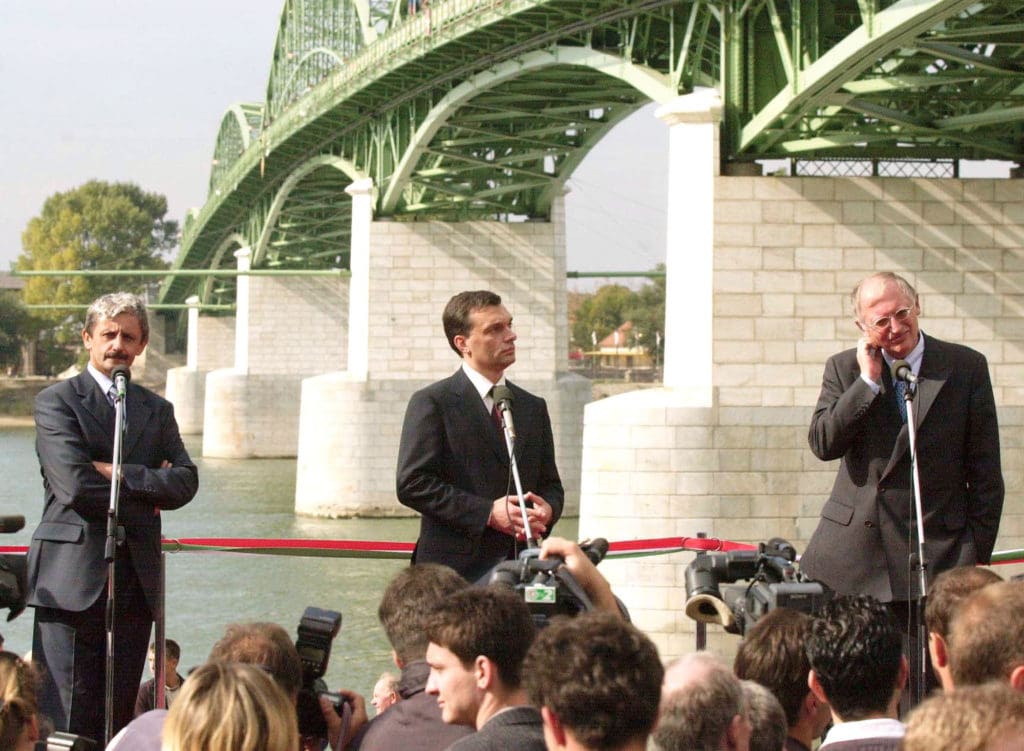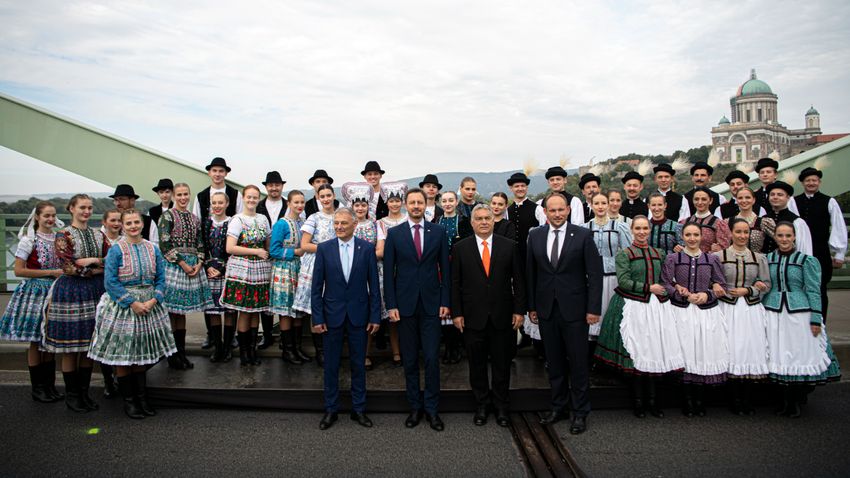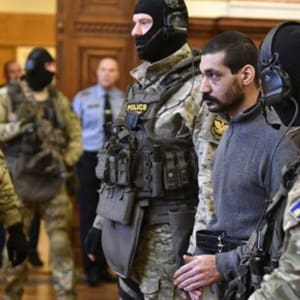The Mária-Valéria bridge over the Danube on the Hungarian-Slovak border is a reminder that the two countries have a common fate and can only be successful together, Hungarian Prime Minister Viktor Orbán said on the 20th anniversary of the bridge’s reopening.
“Alien powers have walked through Central Europe several times, and it was aliens always who demolished our bridges, while we always had to rebuild them,” Orbánsaid, adding that the peoples and states of the region can only be successful if they cooperate.
“A successful Central Europe is important only to us, not to others, so whoever argues against cooperation speaks against himself. The two decades since the bridge was built have taught us that Hungary and Slovakia should go hand in hand.”
The bridge, constructed in 1895, was partially destroyed in both world wars, last during the retreat of the German troops in 1944 when the three central openings were blown up. It was eventually reconstructed and inaugurated on 2010, during Orbán’s first administration.

Regional cooperation has already yielded the first results, as the Visegrád Four (V4) were able to grow steadily in the decade left behind, he said. According to Orbán, the V4 built an effective and stable cooperation and provided common answers to the crises of civilization. This was also the case during the financial, migration, and coronavirus crises, he recalled.
“We want to be good disciples of history; not only must we rebuild the bridges, but we must also keep in mind who destroyed them,” Orbán said, adding that “if we do not, it will happen over and over again.”
He emphasized that the Mária Valéria Bridge remained a symbol affirming that we are the future of Europe and that we should never let the bridges that connect us ever be demolished again. “Our fate is still common, our tasks have only multiplied, and our responsibilities have increased,” Orbán said.
“This story is a story of two good neighbors – a success story, as it were,” stressed Slovak Prime Minister Eduard Heger, adding that Slovakia and Hungary are both a success story within the EU and the V4.
The Slovakian prime minister recalled the circumstances of the inauguration of the bridge two decades ago, and then quoted from the speeches made by the then-prime ministers – Viktor Orbán and Mikulás Dzurinda – at the 2001 event.
Heger, symbolically responding to Dzurinda’s suggestion at the time that the future will show whether the commemoration of the bridge will go down in history – has now said that “this issue has now been decided, as the Mária Valéria Bridge has become an encouraging success story and by now it is clear that the handover of the bridge at the time was more than a symbolic act.”
The bridge was named after Archduchess Mária Valéria, daughter of Austro-Hungarian Emperor Franz Joseph I.





